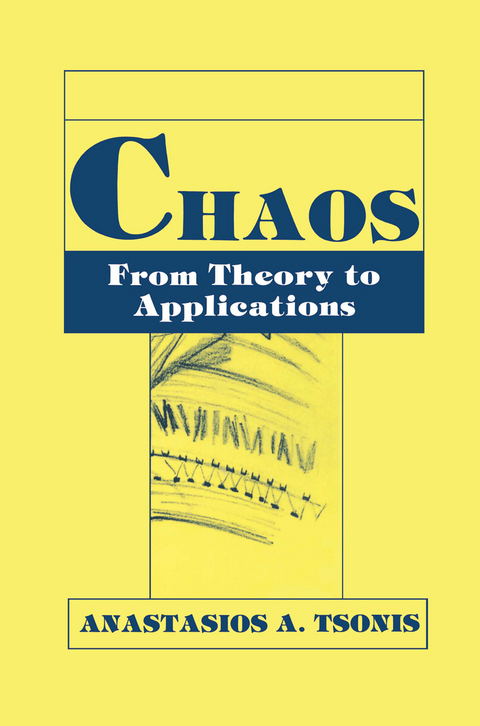
Chaos
From Theory to Applications
Seiten
2012
|
Softcover reprint of the original 1st ed. 1992
Springer-Verlag New York Inc.
978-1-4613-6482-5 (ISBN)
Springer-Verlag New York Inc.
978-1-4613-6482-5 (ISBN)
Based on chaos theory two very important points are clear: (I) random looking aperiodic behavior may be the product of determinism, and (2) nonlinear problems should be treated as nonlinear problems and not as simplified linear problems. The theoretical aspects ofchaos have been presented in great detail in several excellent books published in the last five years or so. However, while the problems associated with applications of the theory-such as dimension and Lyapunov exponentsestimation, chaosand nonlinear pre diction, and noise reduction-have been discussed in workshops and ar ticles, they have not been presented in book form. This book has been prepared to fill this gap between theory and ap plicationsand to assist studentsand scientists wishingto apply ideas from the theory ofnonlinear dynamical systems to problems from their areas of interest. The book is intended to be used as a text for an upper-level undergraduate or graduate-level course, as well as a reference source for researchers. My philosophy behind writing this book was to keep it simple and informative without compromising accuracy. I have made an effort to presentthe conceptsby usingsimplesystemsand step-by-stepderivations. Anyone with an understanding ofbasic differential equations and matrix theory should follow the text without difficulty. The book was designed to be self-contained. When applicable, examples accompany the theory. The reader will notice, however, that in the later chapters specific examples become less frequent. This is purposely done in the hope that individuals will draw on their own ideas and research projects for examples.
I: Notes.- 1 Introduction.- 2 Mathematical Notes.- 3 Physics Notes.- 4 On Fractals.- II: Theory.- 5 Attractors.- 6 Bifurcations and Routes to Chaos.- 7 Chaos Elsewhere.- III: Applications.- 8 Reconstruction of Dynamics from Observables.- 9 Evidence of Chaos in “Controlled” and “Uncontrolled” Experiments.- 10 Nonlinear Time Series Forecasting.- 11 Other Developments and Trends in the Application of Chaos.- References.
| Zusatzinfo | XII, 274 p. |
|---|---|
| Verlagsort | New York, NY |
| Sprache | englisch |
| Maße | 155 x 235 mm |
| Themenwelt | Mathematik / Informatik ► Informatik ► Theorie / Studium |
| Mathematik / Informatik ► Mathematik ► Angewandte Mathematik | |
| Naturwissenschaften ► Physik / Astronomie ► Allgemeines / Lexika | |
| Naturwissenschaften ► Physik / Astronomie ► Mechanik | |
| Naturwissenschaften ► Physik / Astronomie ► Optik | |
| Naturwissenschaften ► Physik / Astronomie ► Theoretische Physik | |
| Technik ► Maschinenbau | |
| ISBN-10 | 1-4613-6482-5 / 1461364825 |
| ISBN-13 | 978-1-4613-6482-5 / 9781461364825 |
| Zustand | Neuware |
| Informationen gemäß Produktsicherheitsverordnung (GPSR) | |
| Haben Sie eine Frage zum Produkt? |
Mehr entdecken
aus dem Bereich
aus dem Bereich
Eine Einführung in die Systemtheorie
Buch | Softcover (2022)
UTB (Verlag)
25,00 €
was jeder über Informatik wissen sollte
Buch (2024)
Springer Vieweg (Verlag)
37,99 €


